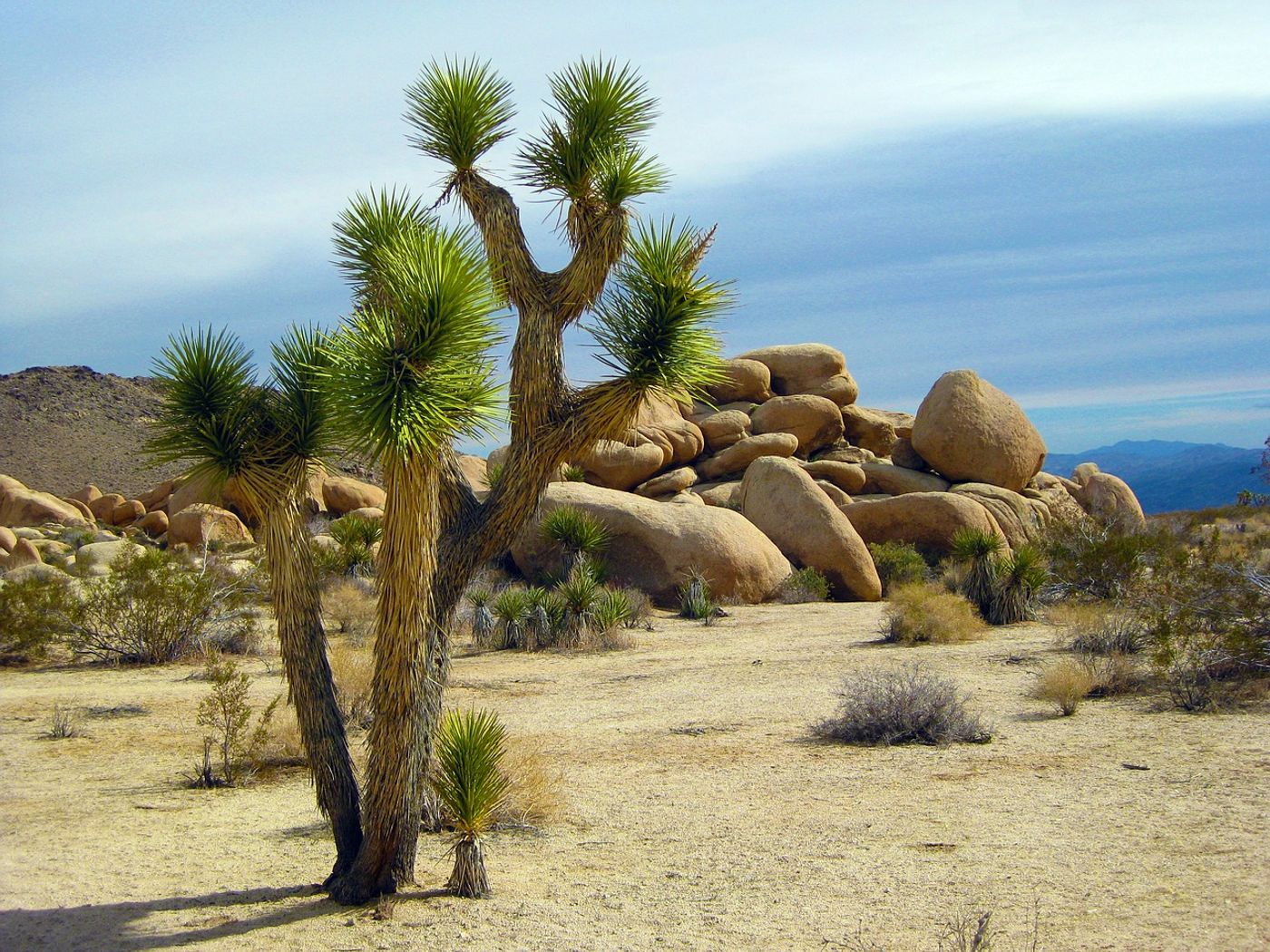Iconic Joshua Trees May Not Survive This Century
Joshua trees are iconic of southern California deserts and have survived for 2.5 million years in harsh desert conditions. An individual tree can survive for up to 300 years thanks to their ability to store water to endure drought conditions. Now, scientists from the University of California Riverside warn that without climate change mitigation, more than 80% of these symbolic trees in Joshua Tree National Park will be lost within the next 50 years.
Previous studies have predicted significant losses of Joshua trees in the national park as well. This research team wanted not only to verify those predictions but also determine if—at all—trees were already being impacted by climate change. The results of their work were published in Ecosphere last month.
The research team and their army of 4,000 volunteers recruited through the Earthwatch Institute collected demographic data of the trees within Joshua Tree National Park. They discovered that Joshua trees are already migrating to higher elevations throughout the park where the weather is cooler, and the ground retains more moisture. While this may be a current refuge for the trees, these elevations are highly susceptible to wildfires, which less than 10% of Joshua trees survive.
Park rangers are removing non-native grasses that can act as kindling to diminish the wildfire threat. In a press release from UCR regarding the study, lead author and UCR plant ecologist Lynn Sweet said, "fires are just as much a threat to the trees as climate change, and removing grasses is a way park rangers are helping to protect the area today."
Additionally, the adult trees remaining at lower, drier elevations are producing fewer younger trees. Those that they do produce do not survive. Researchers suspect that the most recent 376-week-long drought in California did not leave enough groundwater to support younger trees and seedlings. More frequent and more prolonged droughts are expected to occur as a result of climate change.
By using climate models with the demographic data, the team concluded that 19% of the park's trees would survive past 2070 if there are significant emission reductions and temperature rise does not exceed 3°C. Sweet calls this "the best-case scenario." The worst-case scenario has only 0.02% of trees remaining throughout the park.
This study used more climate change variables than previous work, including soil-water estimates, rainfall, soil types, and more. According to co-author Cameron Barrows' statement to UCR reporters, "on-the-ground-observations were essential to verifying the newer climate models." The use of volunteers was essential to the success of this project and could aid future projects as well. As Barrows stated, "I hope members of the public read this and think, 'Someone like me could volunteer to help scientists get the kind of data that might lend itself to concrete, protective actions.'"









